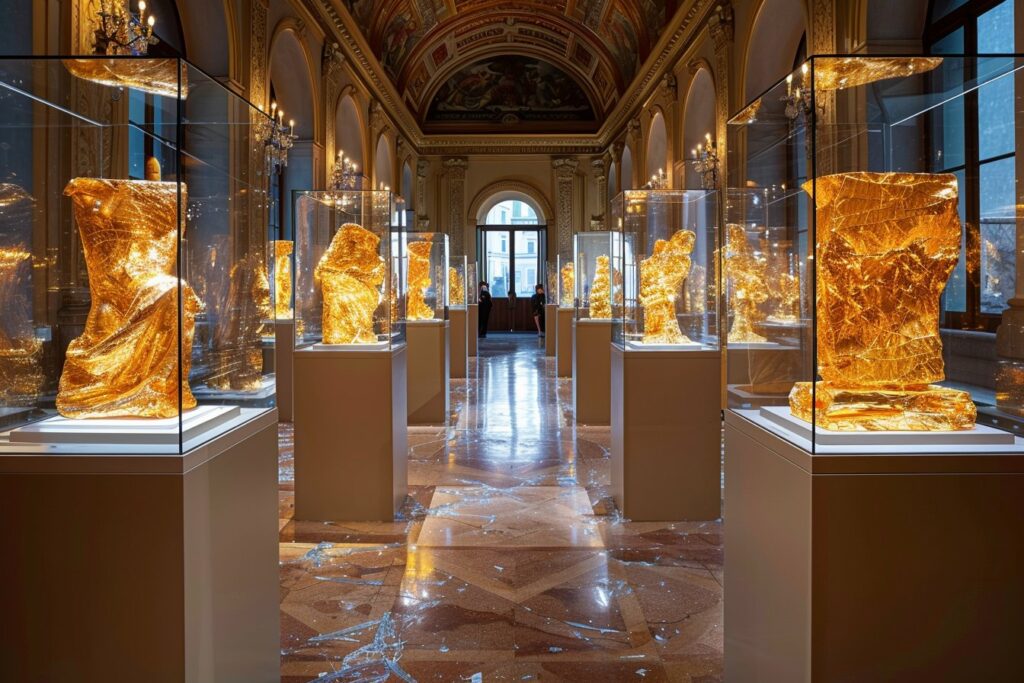In a shocking and meticulously planned heist, an Italian art exhibition near Lake Garda was robbed of over $1.3 million worth of gold sculptures created by the renowned Italian sculptor Umberto Mastroianni. The theft took place on Wednesday night at the Vittoriale degli Italiani estate, with forty-nine pieces of art reported missing.
An Elaborate Theft
The robbery is believed to have been carried out by a highly specialized gang, according to Giordano Bruno Guerri, the head of the estate where the exhibition was hosted. With a total value of €1.2 million, this heist represents a significant blow to the world of Italian art, especially considering the importance of Mastroianni’s work in Italy’s cultural heritage.
Famous Exhibits
The stolen sculptures were part of a larger exhibit showcasing Mastroianni’s life and his artistic journey. Known for his abstract style, which often featured geometric shapes and structures, the exhibition celebrated the artist’s contribution to 20th-century Italian art.
- Mastroianni was born in 1910 in Italy and had a successful career spanning several decades.
- He became known for his abstract sculptures that combined geometry and surrealism, making them instantly recognizable and admired.
- His work has been exhibited worldwide and is considered an important part of Italy’s artistic heritage.
The Impact of the Theft
The blatant robbery has left the Italian art world in a state of shock and dismay, as Mastroianni’s work is highly revered and cherished. These gold sculptures represent a significant portion of his output and are worth much more than their material value in terms of cultural importance. Investigators are working tirelessly to recover the stolen art pieces and bring the thieves to justice.
A Spate of Art Heists
Unfortunately, this heist is not an isolated incident; there have been several high-profile cases of art thefts in recent years. Some of these well-documented heists include:
- In 2010, paintings by Van Gogh, Picasso, and Monet were stolen from the Kunsthal Museum in Rotterdam, Netherlands. Most of these works have never been recovered.
- In 2015, masked gunmen stole five masterpieces from the Musée d’Art Moderne in Paris, including works by Modigliani, Léger, and Braque.
- In 2020, a painting by legendary Dutch artist Vincent van Gogh was brazenly stolen from a temporary exhibition at the Singer Laren Museum near Amsterdam during a COVID-19 lockdown.
Challenges in Recovering Stolen Art
While it is essential to pursue every avenue possible to locate and return stolen works of art, the journey of recovery can be a long and complex one. Thieves often use sophisticated methods to cover their tracks, making it difficult for authorities to trace the whereabouts of the missing artwork. Additionally, international borders and differing legal systems can create complications when it comes to prosecuting those responsible and retrieving the stolen pieces.
Efforts to Combat Art Theft
In response to the rise in art thefts, both national and international organizations have been working together to improve security measures at museums, galleries, and exhibitions. This includes investing in advanced alarm systems, hiring more security personnel, and collaborating with law enforcement agencies to keep a watchful eye on suspicious activities related to stolen art and forgery.
Collectors Beware
Ultimately, the market for stolen art can only thrive if there are willing buyers to purchase these illicit goods. As such, it is vital for collectors and enthusiasts to exercise caution when acquiring artwork—always verifying provenance and authenticity, so they do not inadvertently support criminal enterprise.
The theft of Umberto Mastroianni’s gold sculptures has sent shockwaves through the Italian art world, showcasing just how vulnerable even high-profile exhibitions can be to ambitious thieves. The loss of these culturally invaluable pieces highlights the need for heightened security measures, better cooperation between nations to combat art theft, and responsible practices by collectors when purchasing works of art.

